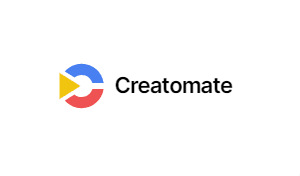
Joseph Harris
Tuesday 19 November 2024

Joe explores Creatomate, which allows you to use its editor to build a template for videos in NoCode apps. it's worth considering?
Posted in:
No-Code
I recently worked with a client who requested a video creator for their no-code product.
They wanted to find a way for their end users to be able to submit multiple video files, images, and music via their no-code system, and mash these together into a video that can then be downloaded.
I checked out several systems, but a number of them fell short. They either took far too long to process anything for a no-code implementation to be viable, or they outright didn’t offer the level of “simple” functionality that was needed for this feature to get off the ground. For example, one of them needed you to specify every single criteria on every single action, even if it wasn’t necessary. This included “length of video clip 1” on an action to combine two clips together.
Then I came across “Creatomate”. Their system was initially a little imposing, but it quickly made sense through their tutorials and explanations of how things work. Plus, it has the upside of being a RESTful API, so cURL calls through Bubble really simplify the connection.
The Problem: Existing Tools Fell Short
At first, I explored various tools that promised to integrate video editing capabilities into a no-code environment. Unfortunately, most solutions weren’t up to the task. Here's why:
Slow Processing Times: Many systems took far too long to process videos, making them impractical for no-code workflows.
Overcomplicated Implementations: Some tools required exhaustive inputs for even the simplest tasks. For instance, to combine two video clips, one tool demanded explicit specifications for every parameter—even when defaults were acceptable.
Limited Functionality: Many solutions lacked the flexibility to support user-friendly integrations or customization.
The challenge was clear: I needed a system that was fast, simple, and flexible. That’s when I discovered Creatomate.
How Creatomate works
At first glance, Creatomate’s system felt a bit overwhelming. But after diving into their tutorials and documentation, the process became surprisingly straightforward. More importantly, its core features addressed all the pain points I had faced with other platforms.
Here’s what sets Creatomate apart:
RESTful API Integration: Its API can be easily integrated into platforms like Bubble through cURL calls, simplifying the entire setup.
Template-Based Workflow: Instead of coding individual actions, you create reusable video templates that streamline dynamic customization.
Fast Rendering: Creatomate’s API delivers video renders in as little as 10-15 seconds—perfect for live previews.
Flexible Output Options: Final videos are delivered in .MP4 format, compatible with virtually all devices and systems.
How Creatomate Works: A Step-by-Step Guide
Step 1: Build Your Video Template
The process starts with Creatomate’s template editor. This is where you lay the foundation for your video:
Choose a Template: Start with a prebuilt design or create one from scratch.
Customize Content: Add elements like video clips, images, music, and text. You can adjust properties (e.g., size, position, duration) for each item.
Define Dynamic Fields: Mark specific elements as dynamic, allowing them to be customized later via API calls.
This template-driven approach eliminates the need to repeatedly define parameters, saving time and ensuring consistency across videos.
Step 2: Generate API Code
Once your template is ready, Creatomate generates the necessary API code. This includes:
Template ID: A unique identifier for your video layout.
Key Pairings: The dynamic fields you marked earlier, ready for input customization.
You can copy this code directly into Bubble’s API connector, making integration almost effortless.
Step 3: Configure Inputs in Bubble
With the API code in place, set up the dynamic fields in Bubble. These fields allow users to upload their own video clips, images, and music or input text dynamically. When an end-user submits their content, the system sends it to Creatomate via an API call.
Step 4: Render the Video
Creatomate processes the data and returns a video URL almost instantly. While the rendering itself takes about 10-15 seconds, this quick preview is temporary and doesn’t consume Bubble’s storage space. The final rendered video stays accessible for 30 days.
Step 5: Download the Final Video
Users can download their completed videos in .MP4 format. Since these files are universal, they’re compatible with all devices and systems.
Here’s what sets Creatomate apart:
1. Seamless Integration with Bubble
Creatomate’s RESTful API makes it easy to connect with Bubble, one of the leading no-code platforms. You can:
Use cURL calls to pass data between Bubble and Creatomate.
Dynamically customize video templates based on user input.
2. Consistent Templates
With Creatomate, you only need to design a template once. This ensures your videos maintain a professional and consistent look, whether you’re creating marketing content or user-generated projects.
3. No Bubble Storage Impact
Because previews and final renders are hosted on Creatomate’s servers, they don’t consume Bubble’s storage. This is a major advantage for projects with limited storage capacity.
4. Speedy Renders
Unlike other tools that take minutes (or longer) to process videos, Creatomate delivers previews in 10-15 seconds and final renders in under a minute. This speed is crucial for maintaining a smooth user experience.
5. Multi-Use Potential
While I used Creatomate to empower end-users, the tool is equally valuable for internal projects. You can create templates for marketing videos, training materials, or consistent brand content.
Things to Keep in Mind
While Creatomate is a powerful tool, it’s not without its quirks:
Strict API Calls: Each API call must include all dynamic fields defined in the template. You can’t omit fields or add extras, so careful planning is essential.
Dynamic Field Setup: Be mindful of which elements you mark as dynamic. Overcomplicating the template can lead to unnecessary complexity in your API calls.
Advanced Creatomate Use Cases
Creatomate’s flexibility opens the door to a range of creative applications:
User-Generated Content Platforms: Let users upload their own media and create personalized videos.
Marketing Automation: Generate branded videos with consistent templates for campaigns.
Training & Education: Create professional-looking tutorials or explainer videos with minimal effort.
Internal Content Creation: Standardize corporate videos for presentations, onboarding, or announcements.The process essentially boils down to using their site’s editor to build a template for a video. Here, you can select a prebuilt one, or a blank one, and then add-to/edit the contents. During this process, you can change as many properties of items as you like, as well as specify what exactly should be “dynamic”.
Once you’ve built your template, you can get the API code generated for you, including the template ID and all the key pairings. This can be straight-up copy and pasted into the API connector and you’re pretty much good to go. Just set up all of the inputs as dynamic fields and you’re set.
Here, you can then specify your video clips, images, music, text, etc. and send them off in an API call, which will instantly return a URL for the render. While this render will take 10-15 seconds to load, it’s a very quick turnaround for a preview, and nothing is saved from these previews, so your storage space won’t get eaten up. It also won’t consume Bubble’s storage space.
The renders last 30 days before deletion and come as .MP4 files by default, so any system can play and download them.
Why Choose Creatomate for No-Code Video Projects?
Creatomate stands out for its unique combination of simplicity, speed, and flexibility. Whether you’re a developer working on a client project or a no-code creator building your own tool, it offers:
Ease of Use: Its template-based approach makes video creation intuitive.
Speed: Rapid rendering ensures a seamless experience for end-users.
Scalability: Dynamic fields and API-driven workflows make it perfect for scaling projects.
In a Nutshell
While it’s a bit of a niche tool, you could equally use it for internal matters, to create your own marketing videos with a consistent format.
While you can easily make extra templates, your API call to a template must include ALL of the dynamic fields you’ve set up. You can't “omit” any from the call or add extras into the call either - everything must match up.
Video is one of the most engaging forms of content, and Creatomate makes it accessible to everyone—even those without technical expertise. By integrating this tool into your no-code project, you can empower users to create dynamic, professional-quality videos in just a few clicks.
Check more recommended resources to Start, Launch and Grow your SaaS:
Ready to launch your startup idea with an MVP?
Download our step by step guide for non-technical founders to create a startup Minimum Viable Product (MVP)
Get the eBook

